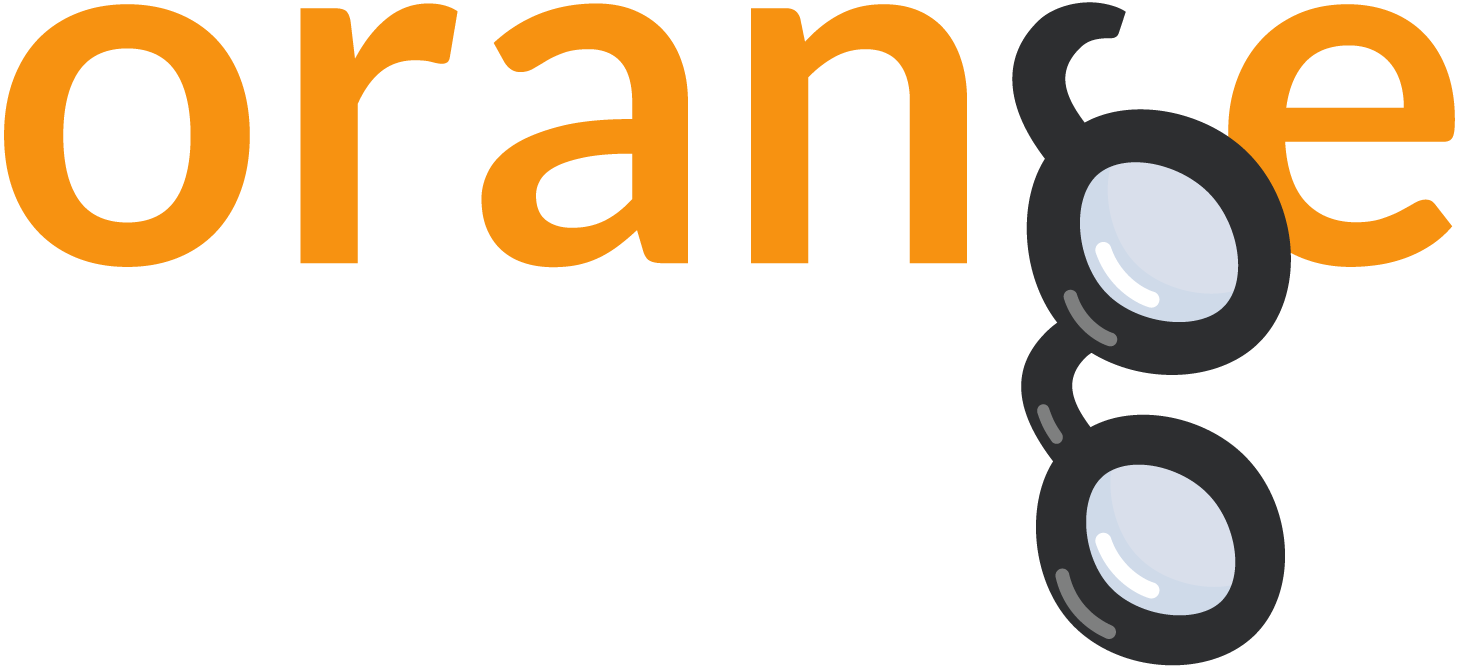Orange Blog
By: AJDA, Jul 20, 2015
Explorative data analysis with Hierarchical Clustering
Today we will write about cluster analysis with Hierarchical Clustering widget. We use a well-known Iris data set, which contains 150 Iris flowers, each belonging to one of the three species (setosa, versicolor and virginica). To an untrained eye the three species are very alike, so how could we best tell them apart? The data set contains measurements of sepal and petal dimensions (width and length) and we assume that these gives rise to interesting clustering.
By: AJDA, Jul 3, 2015
Support vectors output in SVM widget
Did you know that the widget for support vector machines (SVM) classifier can output support vectors? And that you can visualise these in any other Orange widget? In the context of all other data sets, this could provide some extra insight into how this popular classification algorithm works and what it actually does. Ideally, that is, in the case of linear seperability, support vector machines (SVM) find a **hyperplane with the largest margin **to any data instance.
By: MARINKAZ, Jun 8, 2015
Data Fusion Tutorial at the [BC]^2
We are excited to host a three-hour tutorial on data fusion at the Basel Computational Biology Conference. To this end we have prepared a series of short lectures notes that accompany the recently developed Data Fusion Add-on for Orange. We design the tutorial for data mining researchers and molecular biologists with interest in large-scale data integration. In the tutorial we focus on collective latent factor models, a popular class of approaches for data fusion.
By: AJDA, Jun 5, 2015
Data Fusion Add-on for Orange
Orange is about to get even more exciting! We have created a prototype add-on for data fusion, which will certainly be of interest to many users. Data fusion brings large heterogeneous data sets together to create sensible clusters of related data instances and provides a platform for predictive modelling and recommendation systems. This widget set can be used either to recommend you the next movie to watch based on your demographic characteristics, movies you gave high scores to, your preferred genre, etc.
By: AJDA, May 29, 2015
Excel files in Orange 3.0
Orange 3.0 version comes with an exciting feature that will simplify reading your data. If the old Orange required conversion from Excel into either tab-delimited or comma-separated files, the new version allows you to open plain .xlsx format data sets in the program. Naturally, the .txt and .csv files are still readable in Orange, so feel free to use data sets in any of the above-mentioned formats. Since Orange 3.0 is still in the development mode, you will find a smaller selection of widgets available at the moment, but give it a go and see how it works for Excel type data and whether the existing widgets are sufficient for your data analysis.
By: AJDA, May 22, 2015
Orange Fridays
You might think “casual Fridays” are the best thing since sliced bread. But what if I were to tell you we have “Orange Fridays” at our lab, where lab members focus solely on debugging Orange software and making improvements to existing features. This is because the new developing version of Orange (3.0) still needs certain widgets to be implemented, such as net explorer, radviz, and survey plot. But there’s more. We are currently hosting an expert on data fusion from the University of Leuven, prof.
By: LAN, May 5, 2015
Working with SQL data in Orange 3
Orange 3 is slowly, but steadily, gaining support for working with data stored in a SQL database. The main focus is to allow huge data sets that do not fit into RAM to be analyzed and visualized efficiently. Many widgets already recognize the type of input data and perform the necessary computations intelligently. This means that data is not downloaded from the database and analyzed locally, but is retained on the remote server, with the computation tasks translated into SQL queries and offloaded to the database engine.
By: BLAZ, Feb 19, 2015
Orange in Pavia, Italy
These days, we (Blaz Zupan and Marinka Zitnik, with full background support of entire Bioinformatics Lab) are running a three-day course on Data Mining in Python. Riccardo Bellazzi, a professor at University of Pavia, a world-renown researcher in biomedical informatics, and most of all, a great friend, has invited us to run the elective course for Pavia’s grad students. The enrollment was, he says, overwhelming, as with over 50 students this is by far the best attended grad course at Pavia’s faculty of engineering in the past years.
By: BLAZ, Feb 12, 2015
Towards Orange 3
We are rushing, full speed ahead, towards Orange 3. A complete revamp of Orange in Python 3 changes its data model to that of numpy, making Orange compatible with an array of Python-based data analytics. We are rewriting all the widgets for visual programming as well. We have two open fronts: the scripting part, and the widget part. So much to do, but it is going well: the closed tasks for widgets are those on the left of Anze (the board full of sticky notes), and those open, in minority, are on Anze’s right.
By: BLAZ, Jan 18, 2015
Loading your data
By a popular demand, we have just published a tutorial on how to load the data table into Orange. Besides its own .tab format, Orange can load any tab or comma delimited data set. The details are though in writing header rows that tell Orange about the type and domain of each attribute. The tutorial is a step-by-step description on how to do this and how to transfer the data from popular spreadsheet programs like Excel.
